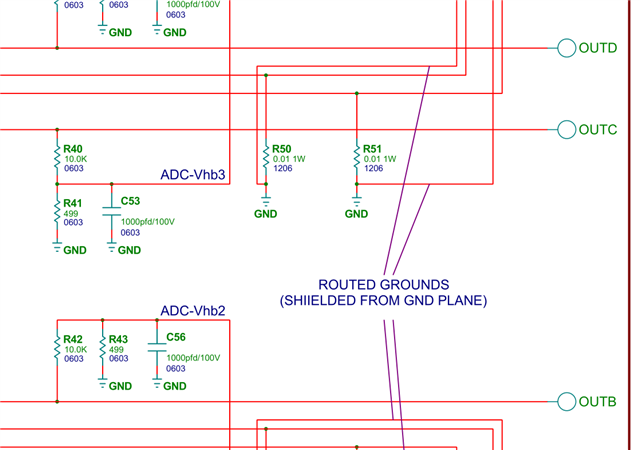Other Parts Discussed in Thread: INA240, INA253, INA254, INA241A, DRV8962
Hi,
We are designing current sensing schematic for DRV8432,
1, In the datasheet, it states that HS sensing is preferred, and if using LS sensing, 10mΩ or less then 100mV drop is required. For DRV8432, the current rating is much higher than DRV8412, it is hard to select a LS shunt resistor. Is there any recommended current sensing strategies (HS or LS or IN line, resistor value or BOM of the shunt resistor) for DRV8432?

2, we would like to copy the current sensing reference designs from DRV8412-C2-kit, which is using LS current sensing with a 10mΩ resistor, in the schematic, it states that ROUTED GROUNDS (SHIIELDED FROM GND PLANE), what does this mean and how could I route the PCB traces?

3, We plan to use DRV8432 as two H-bridge (BTL) mode and operate at 500 KHz, and if we are using IN line current sensing, which current sensing amplifier should we use? Should the bandwidth of the difference amplifier larger than 500 KHz or 1 MHz? I think the feature "enhanced PWM rejection" is preferred, right? We are considering INA240, but its bandwidth is 400KHz, and those current sensing amplifiers with "integrated shunt resistors" (INA253, INA254) only have a maximum bandwidth of 350 KHz.
Thanks!
benyuan

